Devlog 2: Prototyping
Well hello there again!
The last week has been filled with technical struggles, prototyping, art bible work, and writing down our GDD. So lots of work, if you can imagine. But we have some results to show you all!
Working on the Shaders
This week I updated the main art style shader for the game. I went for a kind of toon shader with a customisable outline. I had a lot of help from tutorials and online research to achieve this final result. The shader itself consists of two different shaders working together to achieve the current look.
The first part of the shader is the "toon"-part. It works via the post-process volume in unreal to update how the lighting affects objects in the world. It creates a harder contrast between shadows and lit parts and it can be adjusted to our preferences.
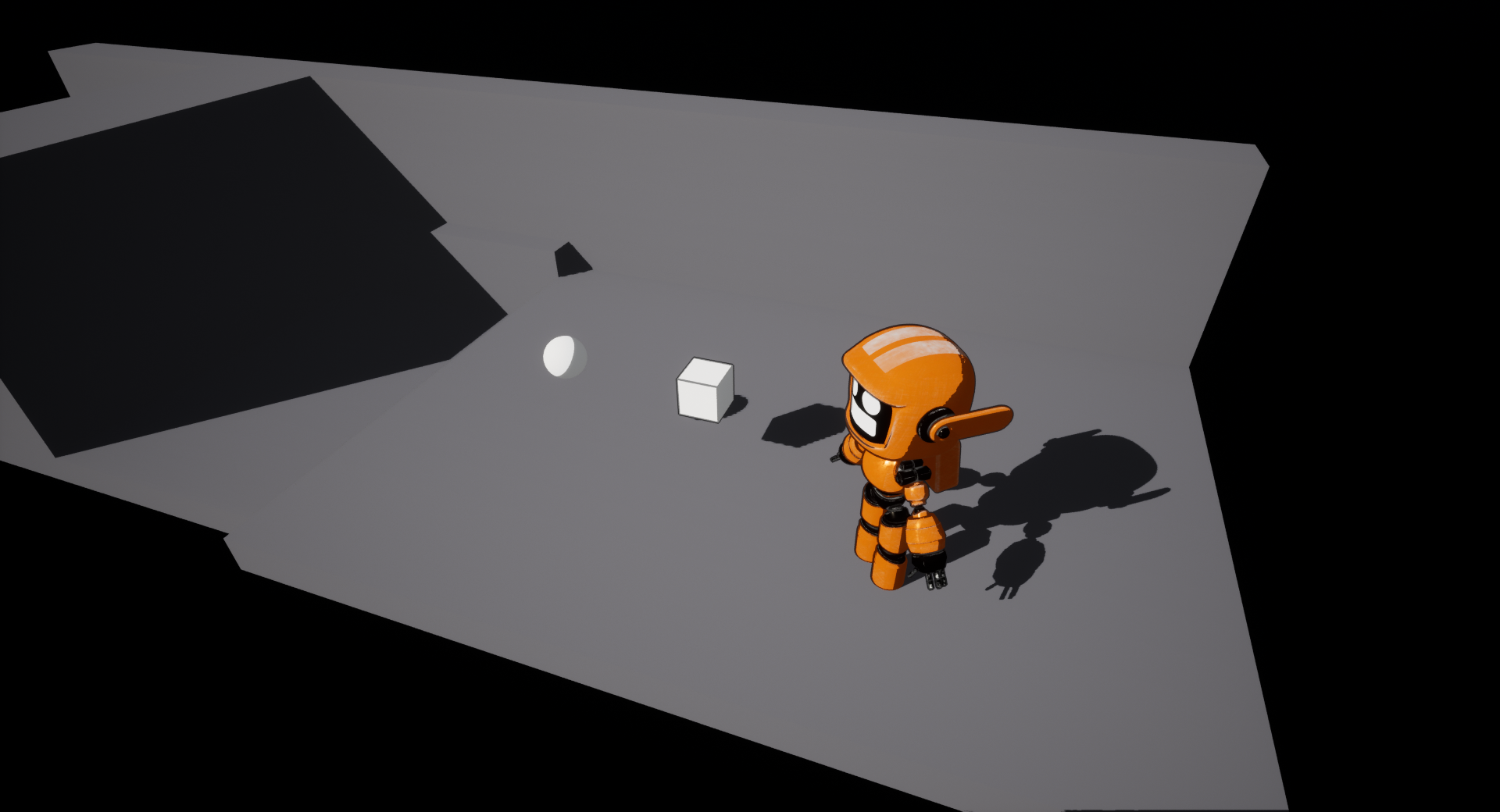
The second part is the outline shader which uses depth and normals to detect the edges of the objects. This shader also uses the post-process volume but is only assigned to selected objects via the custom render depth pass. Furthermore, it uses the custom depth stencil value so you can give selected objects a different outline color.

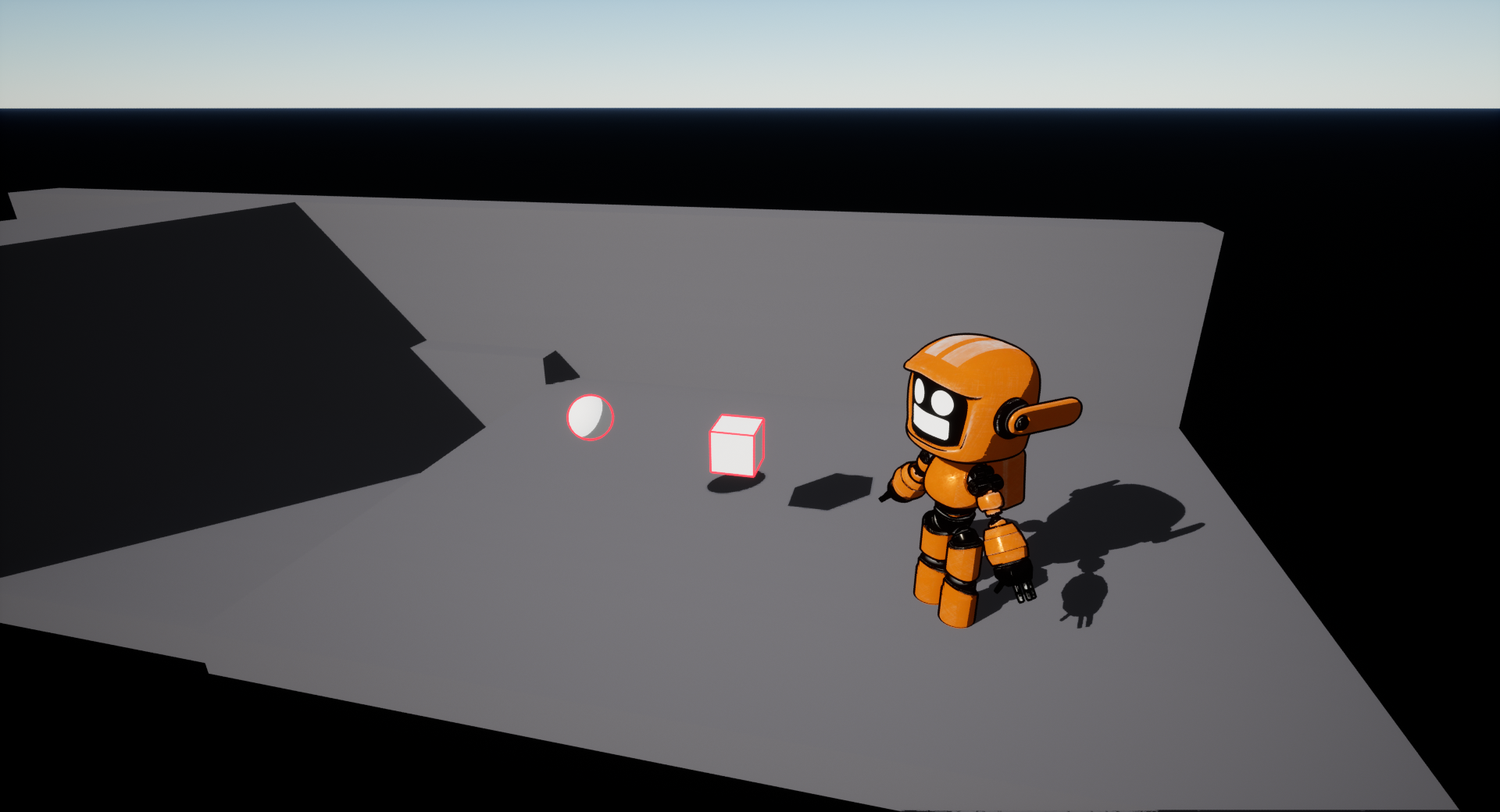
Level Design
After making a couple of 2D blackouts we were ready to make a block out in the 3D engine. From the get-go, we added the guards, cameras, and lasers together with the spaces where the doors will be going so we would have the full idea of how everything would look.
It was important to us that the level could largely be built modularly so that there wouldn't be a need for too many different types of walls and floors. This would save us a lot of time, and give us more space to clutter up the place which will help with the "busy office" vibe.
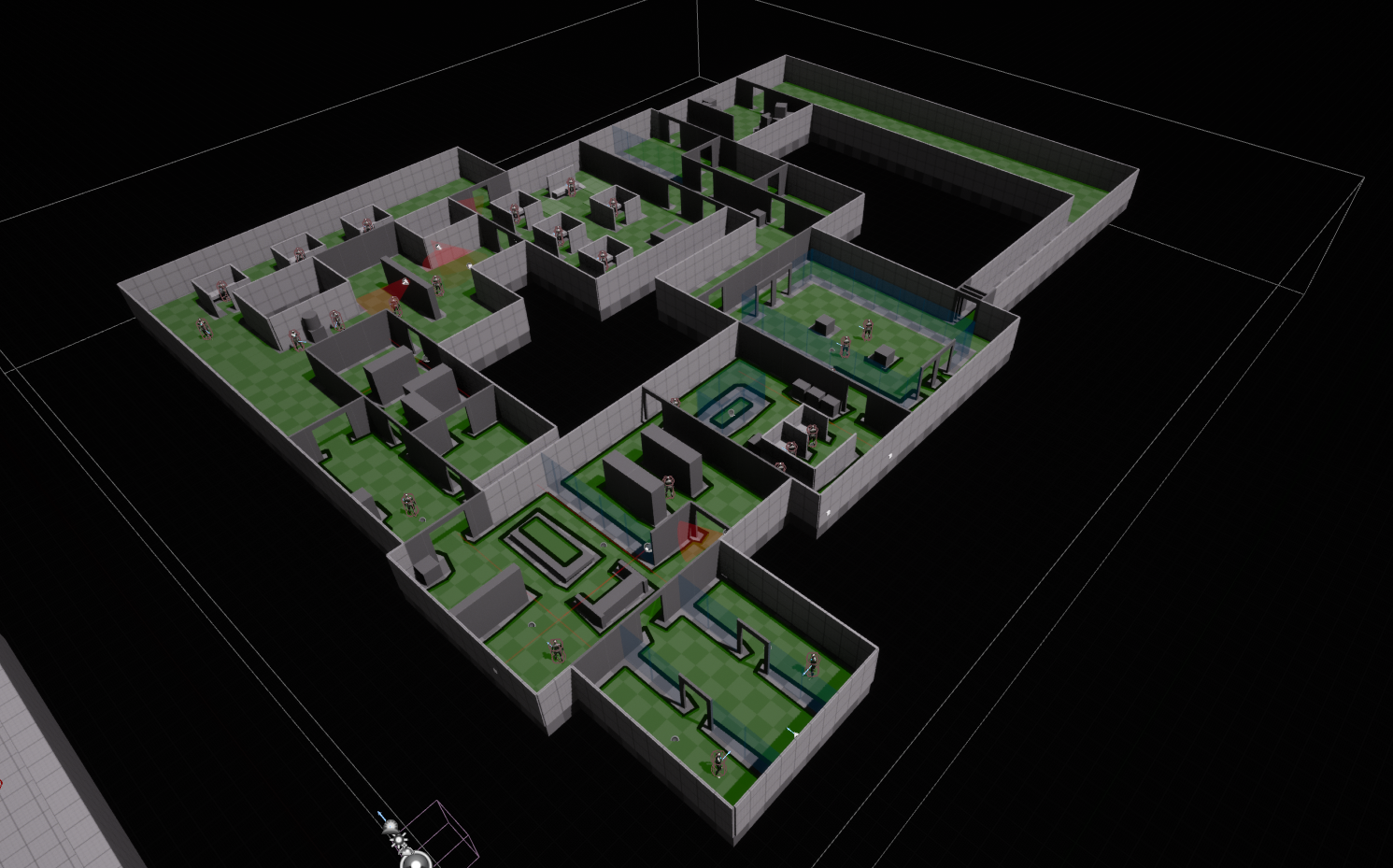
More shader work
Another artist worked on 2 technical shaders; a wall shader that gets invisible when the player gets near the wall so the camera can view the player through it and also a fog of war shader prototype.
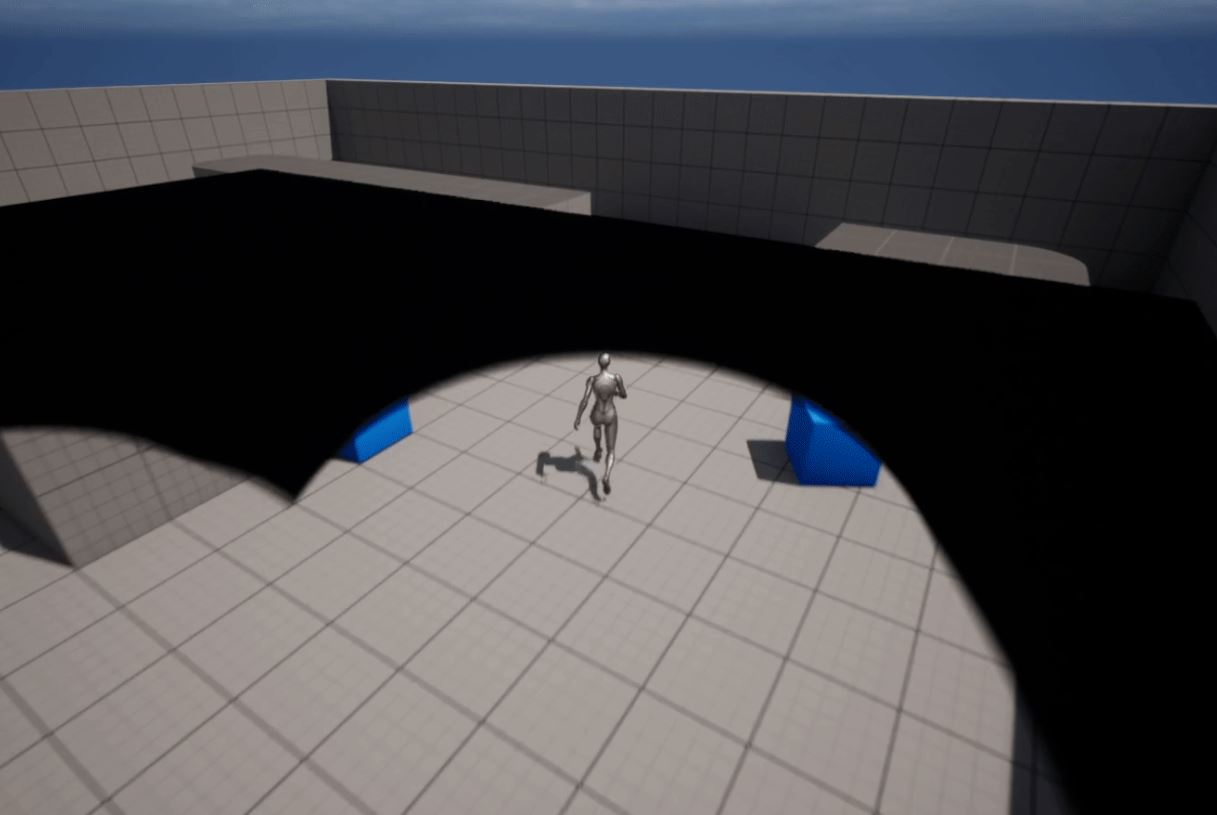

Gameplay
The programmers this week worked on getting the Guard AI and the Hacker gameplay in.
For the Hacker gameplay, we worked out the functionality of binding a unique, visible ID to hackable objects, a command input that gets parsed and cleaned on pressing enter and two simple command promts: 'ID' 'activate/deactivate' that will do just that, activate or deactivate a hackable object. This will ofcourse expand on later iterations, but for now this serves as the groundworks for the hacker mechanics and will very soon be implemented in a gameplay prototype.
The AI was implemented into the level design for testing with basic behaviors like Patrol path, guard on one spot and pursuit player. At the moment it can only detect the player with vision. Later on we plan on adding more behaviors like
- Aware: Once the guard has seen you, it will dynamically move around the map for a while
- Shoot/Alarm: Either harm player or initiate an Alarm Attempt
- Hacked: HACKER is in “control” of the enemy to some extent. This state can be acquired when the SPY gives the HACKER the Robot of their choice's ID.
- Inspected/Distracted: Inspect/ go to noise and be distracted for a couple of seconds.
The AI system is very basic at the moment, but we'll make it more advanced, customizable and better in the future!
Gotta skitty, see you next week!
Files
Get Binary Bandits
Binary Bandits
Are you ready to boogie and sneak around? Yeah?! Then you'll love this local co-op puzzle game!
More posts
- Devlog 11: The Final LogMay 29, 2023
- Devlog 10: Polishing until it shinesMay 22, 2023
- Devlog 9: Last Sprint up AheadMay 15, 2023
- Devlog 8: Decoration to ShootMay 08, 2023
- Devlog 7: An Office Coming AliveMay 01, 2023
- Devlog 6: Enemies and LevelsApr 24, 2023
- Devlog 5: Assets and Characters!Apr 17, 2023
- Devlog 4: The Real BeginningMar 28, 2023
- Devlog 3: More Prototyping and PaperworkMar 21, 2023
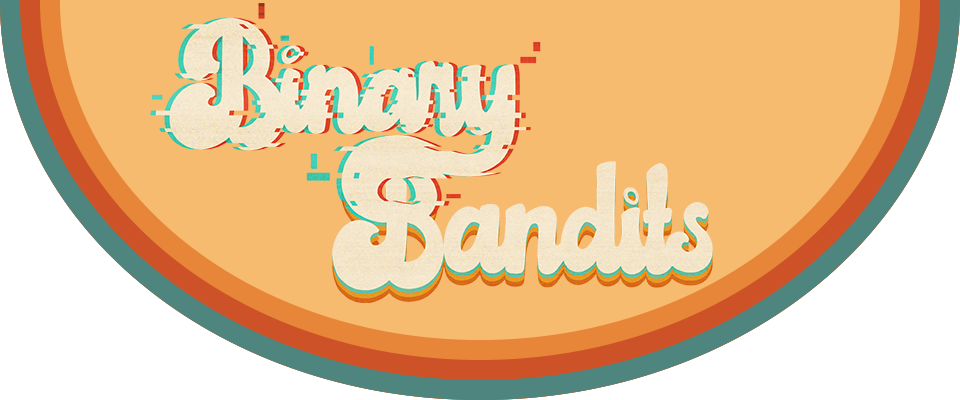
Leave a comment
Log in with itch.io to leave a comment.